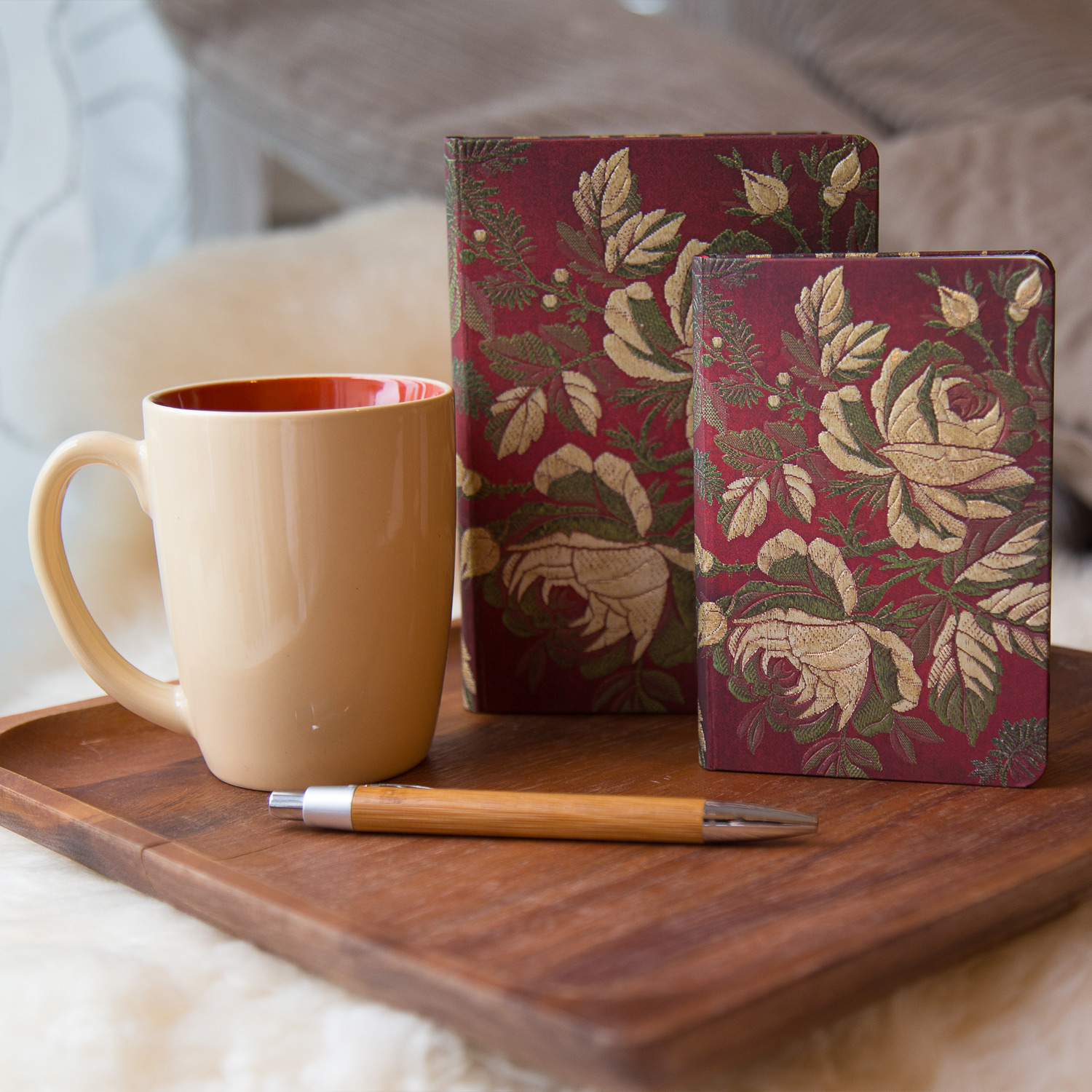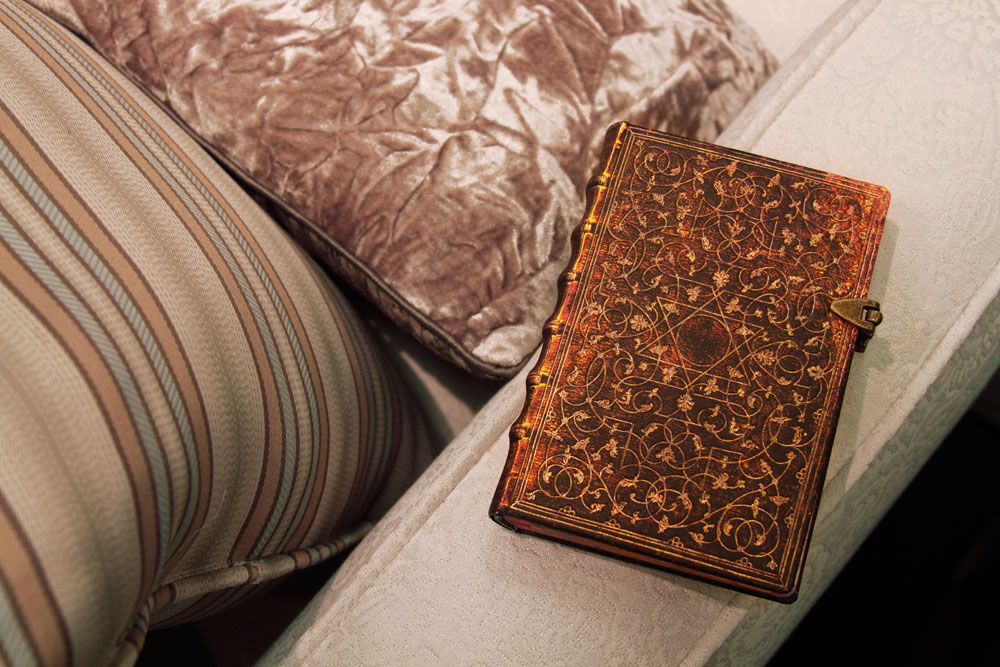Sometimes at the Endpaper Blog we get the unique opportunity to offer a platform to creative journallers from around the world. Today, we are excited to welcome writer, blogger and self-described “stationery fan” Rose as she gives insight into the many benefits of keeping a dream journal. If you know of someone (like yourself!) that we should feature on the Endpaper, please send us an email!
And don’t forget to check out Rose’s blog, Enjoy Happy Stationery: enjoyhappystationery.blogspot.ca.
Dream journalling – a way to collect your dreams
Paperblanks® journals are a dream! Their covers are genuine pieces of art. Most of them are inspired by artists or designed by artists. When looking for journals to start dream journalling, Paperblanks® are a wonderful option.
But what exactly is a dream journal?
A dream journal is a journal in which you record your dreams. Everybody dreams, even when you think you don’t dream and cannot remember your dream, you do dream. Dreams definitely serve a purpose or a few, even though there is no general agreement on this. Yet, they are highly essential for the physical, mental and emotional well-being of a person. In ancient Greece, Hippocrates considered dreams as a signal for mental and physical health. Some people – Freud was one of them – claim that dreams show what is really in your subconscious and your hidden desires, while others think that dreams are a gateway to God. For instance, in ancient times the Sumerians believed that each dream was like a message from the gods. They even had designated people who interpreted dreams.
The most fascinating thing about dream interpretation is that people think they might catch a glimpse of the future. There are cases known where dreams foretold the future. That is why in ancient times the Sumerians, Egyptians, Greeks and other civilizations were focused on this interpretation and even created Dream Books. So why not create your own Dream Book through dream journalling?
How do you keep a dream journal?
This is actually more simple than you think. Keeping a regular journal is not confined to rules and regulations and the same applies to dream journalling. You can take any journal or notebook you like and write “Dream journal” on the first page to remind you of it and then write your dreams on the next pages. However, I can advise you to consider a few elements that will help you get the most out of your dream journal. As with regular journalling, it is beneficial to date your dream entries. This way you can look back on your entries later and see them in a bigger perspective. For example, if you were really stressed during a period because you had exams or an assignment, you might have had certain dreams that were related to it.
The first moment you wake up, write down as much as you can remember from your dream. Start with the image that feels the most pressing. It’s preferable to write down things in a chronological order. Sometimes you can start with whatever comes to your mind first or the dream images that you liked or feared most and then put numbers in front of the dream images for the chronology. Try to be as detailed as possible. If there was a dragon in your dream, was it a big one or just a cute, tiny little one? What was its color? Did it look like any other dragon you have seen or was it a very exceptional one? Did it have eyelashes, earrings, crooked teeth or even braces? Did the dragon talk to you? If so, what words were used? Etcetera.
In addition, write down your thoughts, feelings and emotions related to these dream images. Describe how that dream made you feel. Did you wake up with a heavy feeling of fear or with a light heart? Was your heart still pounding from some fall and you also almost literally fell out of bed? Or did you wake up with a new resolve and determination that nothing could stop you?
Don’t worry about your handwriting or the aesthetics. The most important thing is that you capture those dream images. You can even draw or sketch them if you find that easier. There are many people who use drawings to better illustrate and remember their dreams.
When you finish your writings and drawings, you can write a section called “Interpretation” below your dreams. If you don’t have a single clue what your dream signifies, you can even write that. “I don’t see what this dream wants to tell me” could be an example of your interpretation. Sometimes you can wonder about your dream, why you took a certain road and not the other. Write down these ponderings and contemplations as well.
When you look back at these dreams some time later, you might be able to better interpret them and put them into a better or different perspective. Also, if there are patterns in your dreams, it will be easier for you to spot them. One easy way to find patterns in your dreams is to label them. For instance, below the date of your dream entry leave two lines empty (if you use a lined journal) or some blank space (when using a blank journal). After you have finished writing, you can list three main points of your dream: nightmare, dogs, vampires. By categorizing your dreams, you will find patterns over time. Furthermore, you will have a collection of your dreams.
What are the benefits of dream journalling?
As with regular journalling, dream journalling has many benefits. For some it is a great form of therapy because hidden fears can be distilled from it and confronted. It is a wonderful way of getting to know yourself better in a different way. It is also claimed that keeping a dream journal increases your creativity and stimulates out-of-the box thinking.
With all these benefits, what is keeping you? Start dreaming!
About Paperblanks®: At Paperblanks®, we believe that art should have a place in all aspects of life. That’s why we follow the artist’s way in everything we do – creating, crafting and releasing designs we believe have the power to touch people. For more about Paperblanks®, go to our website at paperblanks.com.









Neat!